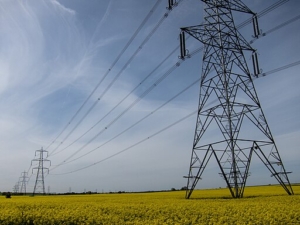
The historic effort that has been made to upgrade and stabilize America’s infrastructure over the past several years has moved the country into a safer and more resilient state. But there’s more that must be done. The effort is not ending, and new funding has just been announced for America’s power grid infrastructure.
The U.S. Department of Energy will allocate almost $2 billion for 38 projects that will directly focus on hardening the U.S. power grid. The objective of each effort will be to protect against the escalating threats of extreme weather and to increase the grid’s capacity so that the needs of manufacturing, data center operations, electrification and citizen safety are met.
The 38 projects to be funded will span 42 states and the District of Columbia. Six initiatives will be in Florida to help the state recover from the recent damage caused by back-to-back hurricanes. This new funding comes from the Bipartisan Infrastructure Law that was passed by Congress, and a total of $10.5 billion is available for grid stabilization efforts.
The Massachusetts Department of Energy Resources will lead a major grid modernization project that has a projected cost of $888 million. An allocation of $389 million from the federal program will support the project, which is designed to increase the points of interconnection in Massachusetts, Connecticut and Rhode Island to enhance grid resilience. When completed, the project will deliver 4,800 megawatts of offshore wind energy and provide enough clean energy to power 2 million homes. It will also include components that allow for energy storage and grid flexibility. Construction is slated for 2028 due to the time that will be required for permitting and approvals.
A $176 million project in Northern California will be overseen by the Redwood Coast Energy Authority. It will be designed to provide more energy independence and enhance grid resilience for tribal communities. Components of the project will include the construction and installation of advanced microgrids for the distribution circuit that provides electricity to three tribal nations. The microgrids will not only improve grid reliability, but they will also provide stability, efficiency and cost savings. The project will integrate 20 MW of renewable energy which will be sourced from local solar and hydroelectric power. Construction is slated to begin in 2025, and the project’s completion date is 2030.
The Fayetteville Public Works Commission in North Carolina will lead a $23.7 million project designed to improve reliability and reduce demand on the state’s electric grid. This effort will include the deployment of advanced technologies such as smart meters, distribution power flow devices and numerous other systems, along with a distributed energy resources management system that provides real-time monitoring and management of resources. The upgrades will also improve grid operations by integrating renewable energy resources. Three new solar farms will add power and help to rebalance the system. Construction is currently slated for 2025.
Citizens in Morgan County, Indiana will benefit from an electric grid reliability project that was announced recently. The $218.7 million project will fortify the grid’s resilience to meet increased demand that the region is experiencing because of population growth. Construction will include 5.8 miles of new overhead transmission lines to connect two substations. The new lines will also serve as an additional power source to reduce power outages. Pre-construction activities will continue throughout 2024, and officials had hoped that other construction related work could also begin in 2024. It would include foundation preparation, vegetation management and other measures; however, since construction solicitations have not yet been released, the work may be delayed until 2025.
City officials and the Kerrville Public Utility Board in Texas will oversee construction of a natural gas generating plant that will be designed to improve grid reliability and stabilize customer rates. The project carries a $150 million cost estimate. The new plant, a reciprocal internal combustion engine plant, will generate 124 MW of natural gas and will be located outside of the electric provider’s area. This type of plant is highly efficient with almost zero water consumption. It will be connected to the statewide energy grid in Texas. The project is currently working through the planning and approval process, and construction documents have not been finalized. However, the project is expected to move quickly because the utility board plans to have the plant online by early 2027.
The California Energy Commission is making plans to launch a $1.5 billion transformative energy project with federal funding support. The project will be designed to replace more than 100 miles of transmission lines using advanced conductor technologies and dynamic line ratings. The upgrades will include the use of advanced conductor technology, which will unlock approximately 1 GW of renewable energy interconnection capacity to allow faster integration of clean energy into California’s grid. Construction is anticipated to begin in 2025 with completion expected by 2030.
Grid infrastructure stability and adequacy is a critical requirement for the well-being of all Americans, and these very high priority projects will require the skills of numerous industry sectors.
